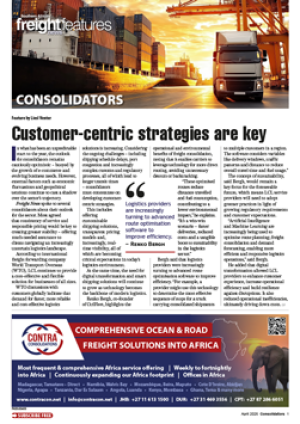Airfreight volumes are gradually recovering after a slow start to 2025, but uncertainty around political developments in the United States, particularly the future of the African Growth and Opportunity Act (Agoa), remains a key concern.“The market was sluggish at the start of the year, with volumes only picking up late in the month,” said Stuart Tonkin of Air Menzies International. “Ongoing political uncertainty in the US, especially regarding Agoa, is something the industry is watching closely.”Despite the slow start, To n k i n said AMI’s perishables business was expanding, with new clients coming on board and an increasing range of products being exported. “There is also a shift among forwarders towards diversifying into new products and verticals that were not traditionally part of their portfolios. AMI is well positioned to support these clients in any way they need.”However, securing capacity remains a challenge, particularly when it comes to obtaining connections beyond carrier hubs. “Large volumes of e-commerce are limiting capacity in various regions. Transit into West Africa is critical, often forcing us to route via Europe, which significantly increases costs,” said Tonkin. The shift towards dynamic pricing by airlines is also reshaping how forwarders operate, as carriers focus on maximising space utilisation and revenue.“The Chinese New Year impacted the market in January and February, but this has now stabilised and we expect lanes to open up and trading to resume,” he told Freight News.While the airfreight sector has largely stabilised post-Covid, with the return of some well-known carriers and new f lights entering key markets, capacity remains tight, particularly for South Africa, which is an import-heavy market. “South Africans still have a huge appetite for imported products, which creates continued demand for capacity on both passenger and cargo f lights,” said Tonkin. LV

